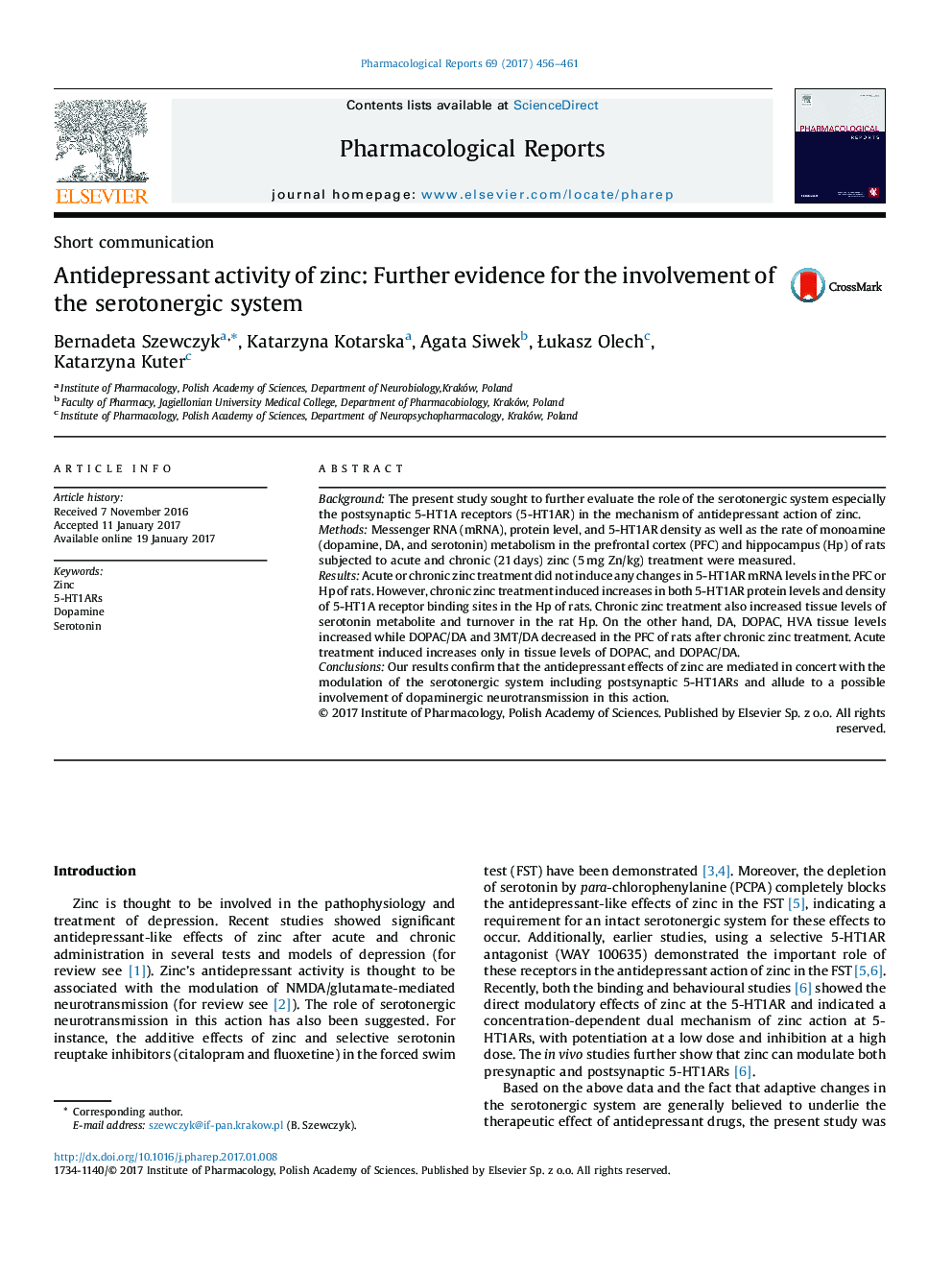| Article ID | Journal | Published Year | Pages | File Type |
|---|---|---|---|---|
| 5515069 | Pharmacological Reports | 2017 | 6 Pages |
BackgroundThe present study sought to further evaluate the role of the serotonergic system especially the postsynaptic 5-HT1A receptors (5-HT1AR) in the mechanism of antidepressant action of zinc.MethodsMessenger RNA (mRNA), protein level, and 5-HT1AR density as well as the rate of monoamine (dopamine, DA, and serotonin) metabolism in the prefrontal cortex (PFC) and hippocampus (Hp) of rats subjected to acute and chronic (21Â days) zinc (5Â mg Zn/kg) treatment were measured.ResultsAcute or chronic zinc treatment did not induce any changes in 5-HT1AR mRNA levels in the PFC or Hp of rats. However, chronic zinc treatment induced increases in both 5-HT1AR protein levels and density of 5-HT1A receptor binding sites in the Hp of rats. Chronic zinc treatment also increased tissue levels of serotonin metabolite and turnover in the rat Hp. On the other hand, DA, DOPAC, HVA tissue levels increased while DOPAC/DA and 3MT/DA decreased in the PFC of rats after chronic zinc treatment. Acute treatment induced increases only in tissue levels of DOPAC, and DOPAC/DA.ConclusionsOur results confirm that the antidepressant effects of zinc are mediated in concert with the modulation of the serotonergic system including postsynaptic 5-HT1ARs and allude to a possible involvement of dopaminergic neurotransmission in this action.
